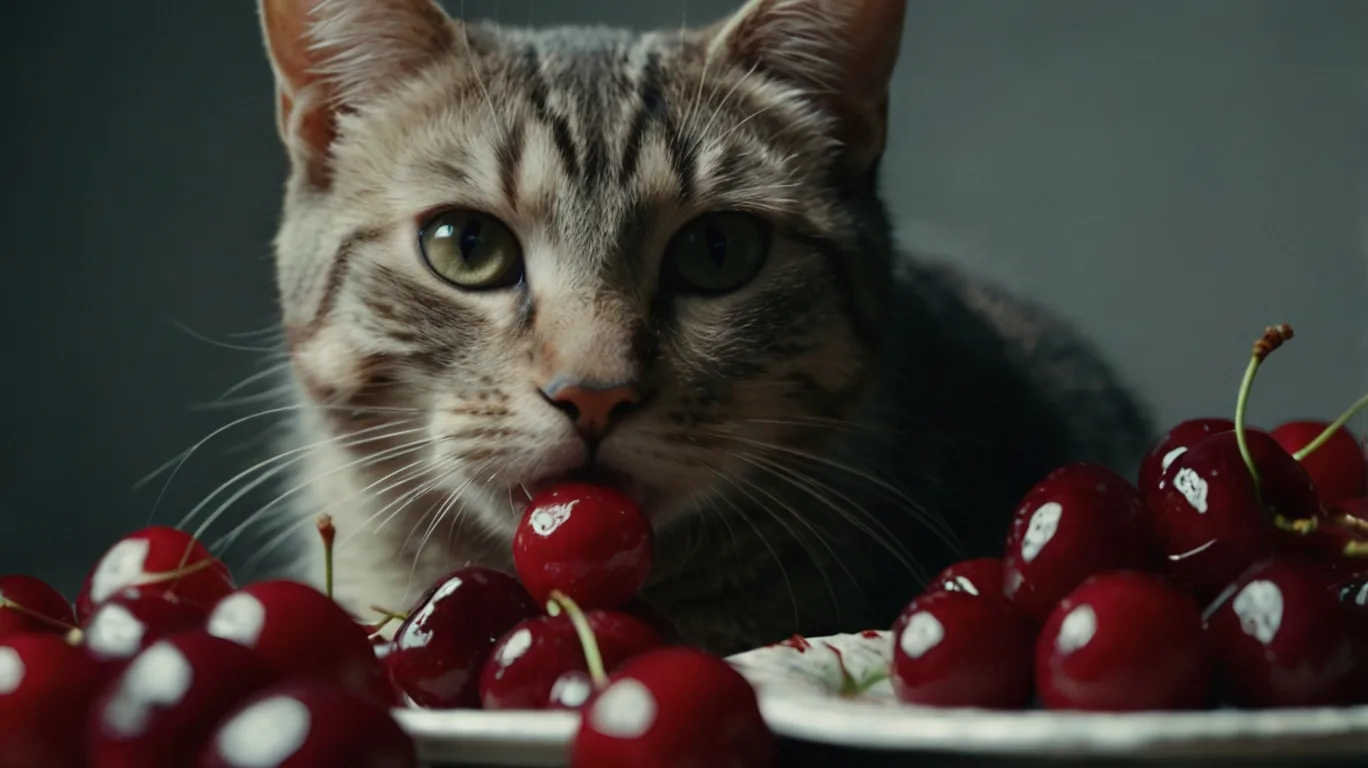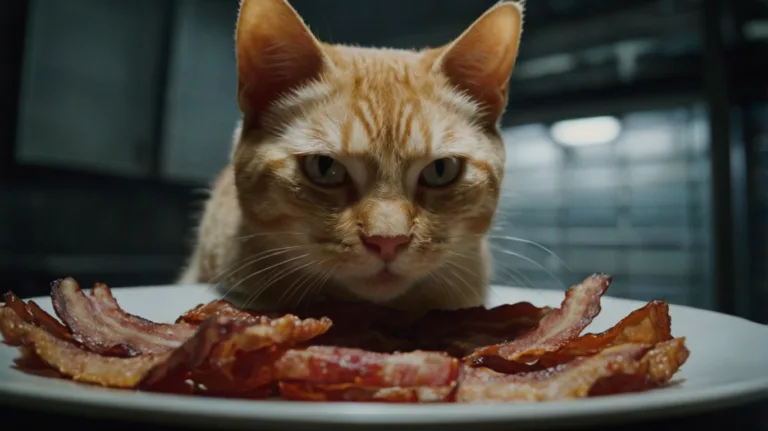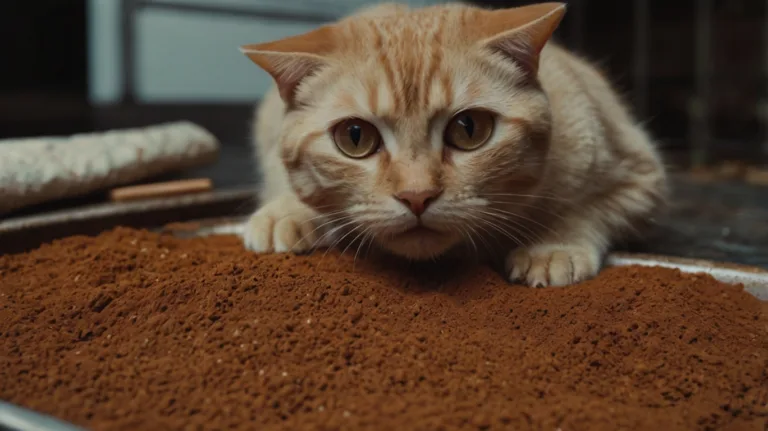Can Cats Eat Cherries?

As a cat owner, I’ve always been fascinated by my feline friend’s curiosity, especially regarding food. Whether cooking Bacon in the kitchen or snacking on a bowl of cherries, my cat appears out of nowhere, sniffing the air and giving me that “Can I have some?” look. But as much as I love spoiling my cat, I know that not all human foods are safe for her. One question I’ve often wondered about is: Can cats eat cherries?
Over the years, I’ve researched and consulted with veterinarians to ensure my cat’s diet is safe and healthy. In this article, I’ll share everything I’ve learned about cherries, Bacon, and other human foods, along with expert advice and personal experiences. If you’re a cat owner like me, this guide will help you make informed decisions about what to feed your furry friend.
Short Answer:
Can Cats Eat Cherries? No, cats should not eat cherries. While the flesh is not toxic, the pits, stems, and leaves contain cyanide, which is poisonous to cats.
Understanding Cats and Human Foods
When I first brought my cat home, I quickly realized how curious she was about everything I ate. She’d sit beside me, watching intently as I enjoyed my meals, from fruits to meats. But I soon learned that cats are obligate carnivores, meaning their bodies are designed to thrive on a diet primarily composed of animal-based proteins. Unlike humans, cats lack the enzymes needed to efficiently digest plant-based foods, which makes many human foods unsuitable for them.
While sharing my snacks with my cat is tempting, I’ve learned to be cautious. Some foods, like cherries, can pose serious risks to her health. Understanding which foods are safe and which are harmful is essential for keeping her happy and healthy.
Nutritional Profile of Cherries
I love cherries. They’re sweet, juicy, and packed with great nutrients for humans. But are they suitable for cats? Let’s take a closer look at the nutritional profile of cherries:
- Vitamins: Cherries are rich in vitamins C, A, and K.
- Minerals: They contain potassium, magnesium, and calcium.
- Antioxidants: Cherries contain anthocyanins and quercetin, which help combat inflammation and oxidative stress.
- Fiber: They provide dietary fiber, which aids in digestion.
While these nutrients benefit humans, they don’t offer the same benefits to cats, as some components of cherries can be harmful to them.
Can Cats Eat Cherries?
After researching, I discovered that the answer for Can cats eat cherries? is a resounding no. While the flesh of the cherry isn’t toxic to cats, other parts of the fruit can be dangerous. Here’s why I avoid giving cherries to my cat:
The Risks of Cherries for Cats
- Cyanide Toxicity:
- The cherries’ pits, stems, and leaves contain cyanogenic glycosides, which can release cyanide when ingested. Cyanide is a potent toxin that interferes with oxygen transport in the body, leading to symptoms like difficulty breathing, dilated pupils, and even death in severe cases.
- Even a small amount of cherry pits or stems can be dangerous for a cat due to their small size and sensitivity to toxins.
- Choking Hazards:
- Cherry pits are complex and can pose a choking hazard. If my cat were to swallow a pit, it could become lodged in her throat or digestive tract, causing blockages that might require surgery.
- Digestive Issues:
- The high sugar content in cherries can upset my cat’s stomach, leading to vomiting, diarrhea, or other digestive problems. Cats lack the enzymes needed to break down plant-based sugars efficiently, making fruits like cherries difficult for them to digest.
Expert Advice on Cats and Cherries
To better understand the risks, I consulted with several veterinarians and feline nutrition experts. Here’s what they had to say:
- Dr. Jane Brunt, Executive Director of the CATalyst Council:
- “Cats are obligate carnivores whose bodies aren’t designed to process plant-based foods like cherries. The risks far outweigh any potential benefits.” Link.
- Dr. Gary Richter, Veterinary Health Expert:
- “Even small amounts of toxic substances can have a significant impact on a cat’s health. It’s always better to err on the side of caution and avoid feeding them foods that aren’t specifically formulated for their needs.” Dr. Gary Richter.
- Dr. Lisa Pierson, Feline Nutritionist:
- “Cherries contain compounds that can be harmful to cats, especially the pits and stems. Stick to a balanced, species-appropriate diet to keep your cat healthy.” CatInfo.org.
- ASPCA Animal Poison Control Center:
- “Cherries are not recommended for cats due to the risk of cyanide toxicity. If your cat ingests cherry pits, stems, or leaves, contact your veterinarian immediately.” ASPCA Toxic Foods for Cats.
- Pet Poison Helpline:
- “The cyanide content in cherry pits and stems can be life-threatening to cats. Keep cherries out of reach to prevent accidental ingestion.” Pet Poison Helpline.
Safe Fruits for Cats
While cherries are off the menu, I’ve discovered that there are some fruits my cat can enjoy in moderation. Here are a few safe options:
- Blueberries: These tiny fruits are packed with antioxidants and are low in sugar, making them a healthy treat.
- Watermelon: My cat loves the occasional piece of seedless watermelon. It’s hydrating and low in calories.
- Cantaloupe: The sweet taste of cantaloupe is a hit with my cat, and it’s a good source of vitamins A and C.
- Apples: As long as the seeds and core are removed, apples are safe for cats and provide a bit of fiber.
I introduce new foods gradually and in small amounts to monitor my cat’s reaction. If she shows any signs of digestive upset, I stop feeding the fruit immediately.
The Role of Bacon in a Cat’s Diet
One food my cat loves is Bacon. The smell drives her crazy, and she’ll sit by my feet, meowing for a piece. But is Bacon safe for cats? Here’s what I’ve learned:
Is Bacon Safe for Cats?
Can Cats Eat Bacon? Bacon isn’t toxic to cats, but it’s not an ideal food for them, either. Here’s why I limit how much Bacon I give my cat:
Nutritional Value of Bacon
- Protein: Bacon is high in Protein, essential for a cat’s diet.
- Fat: It’s also high in Fat, which can lead to obesity and pancreatitis if consumed in large quantities.
- Sodium: Bacon contains a lot of salt, which can harm cats in excess.
Risks of Feeding Bacon to Cats
- High-Fat Content:
- Too much Fat can cause obesity and pancreatitis, a serious condition that requires veterinary care.
- High Sodium Content:
- Excessive salt intake can lead to dehydration, high blood pressure, and kidney problems.
- Additives and Preservatives:
- Many bacon products contain additives that can be harmful to cats.
My Approach to Feeding Bacon
I occasionally give my cat a tiny piece of Bacon as a treat, but I make sure it’s cooked plain (no seasoning) and free of additives. I also limit the amount to avoid any health issues.
Balanced Nutrition for Cats
Over the years, I’ve learned that providing a balanced, species-appropriate diet is key to keeping my cat healthy. Here’s what I focus on:
- High-Quality Protein: I choose cat foods that list real meat as the first ingredient.
- Taurine: This essential amino acid is crucial for my cat’s heart health and vision.
- Moderate Fat: I ensure her diet includes healthy fats for energy and coat health.
- Vitamins and Minerals: I look for foods that provide a balanced mix of essential nutrients.
Conclusion
As much as I love sharing my food with my cat, I’ve learned that not all human foods are safe for her. Can cats eat cherries? Cherries, with their potential for cyanide toxicity and choking hazards, are a definite no. While not toxic, Bacon should be given sparingly due to its high Fat and sodium content. Instead, I focus on providing my cat with a balanced diet that meets her nutritional needs.
If you’re unsure whether a food is safe for your cat, consult your veterinarian. They can provide personalized advice based on your cat’s age, weight, and health status. By making informed decisions about your cat’s diet, you can help ensure she lives a long, healthy, and happy life.





3 Comments